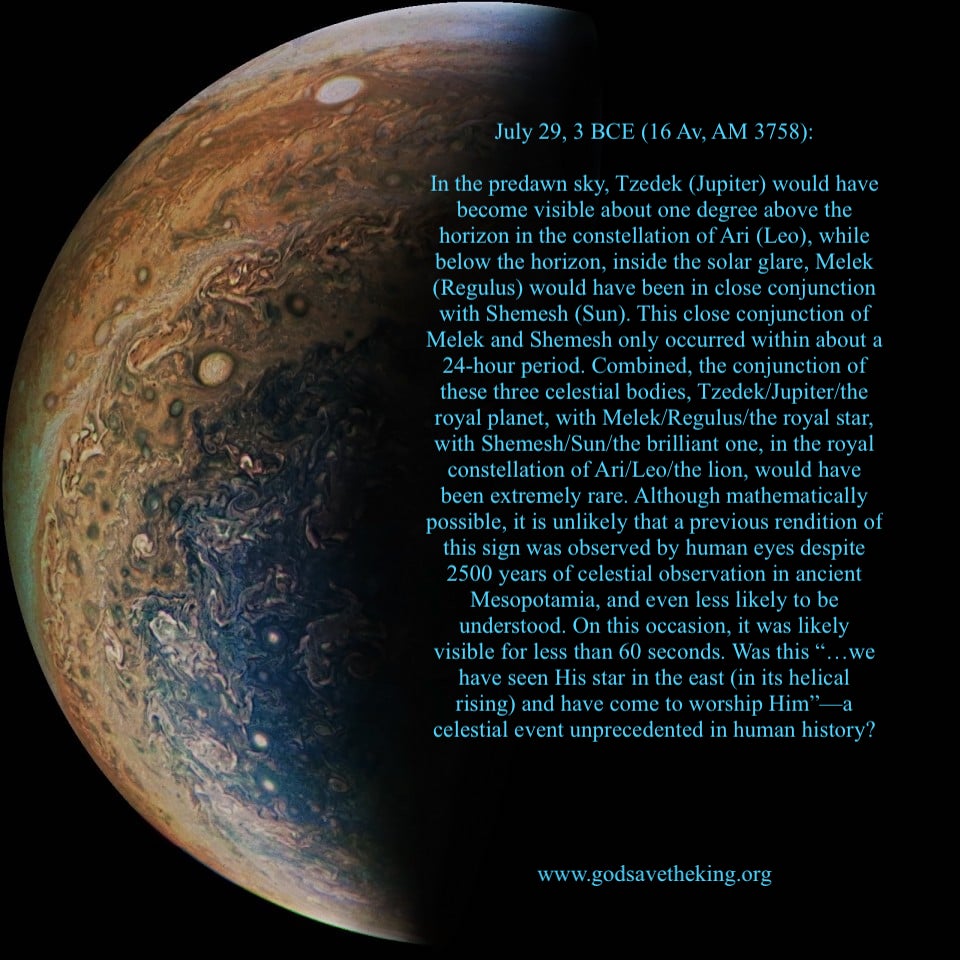
September 11, 3 BCE (1 Tishri AM 3759):
In Revelation 12:1, “…a woman clothed with the sun and the moon under her feet and on her head a crown of twelve stars…” is a celestial sign combining (from the evening observation) the constellation Virgo, and (from the morning observation) the constellation Leo (erev and boker). Based on Revelation 12:2,5, I believe this is a celestial sign given to readers of the New Testament to cryptically provide the birthdate of Jesus of Nazareth. Although this sign was likely seen by Mesopotamian celestial observers (Magi) residing in cities throughout Mesopotamia and the Parthian Empire, and was remarkable to them because of because of the conjunction of Tzedek (Jupiter) and Melek (Regulus) in Ari (Leo, the Lion), I do not believe it was this sign that initially caught their attention.
Mesopotamian celestial observers were obsessed with the movements of the planet Jupiter (Tzedek in Hebrew; MUL.BABBAR in Babylonian), tracking the movements of the king planet daily.
July 29, 3 BCE (16 Av, AM 3758):
In the predawn sky, Tzedek (Jupiter) would have become visible about one degree above the horizon in the constellation of Ari (Leo), while below the horizon, inside the solar glare, Melek (Regulus) would have been in close conjunction with Shemesh (Sun). This close conjunction of Melek and Shemesh only occurred within about a 24-hour period. Combined, the conjunction of these three celestial bodies, Tzedek/Jupiter/the royal planet, with Melek/Regulus/the royal star, with Shemesh/Sun/the brilliant one, in the royal constellation of Ari/Leo/the Lion, would have been extremely rare. As skilled celestial observers, the Magi would not have been easily impressed by “normal” risings, settings, orbits, or configurations. But on this date, Tzedek (Jupiter) “appeared” (see Matthew 2:7) for the first time after its annual occultation in the sun’s glare. Although mathematically possible, it is unlikely that a previous rendition of this sign was observed by human eyes despite 2500 years of celestial observation in ancient Mesopotamia, and even less likely to be understood. On this occasion, it was likely visible for less than 60 seconds. Was this “…we have seen His star in the east (in its helical rising) and have come to worship Him”—a celestial event unprecedented in human history?